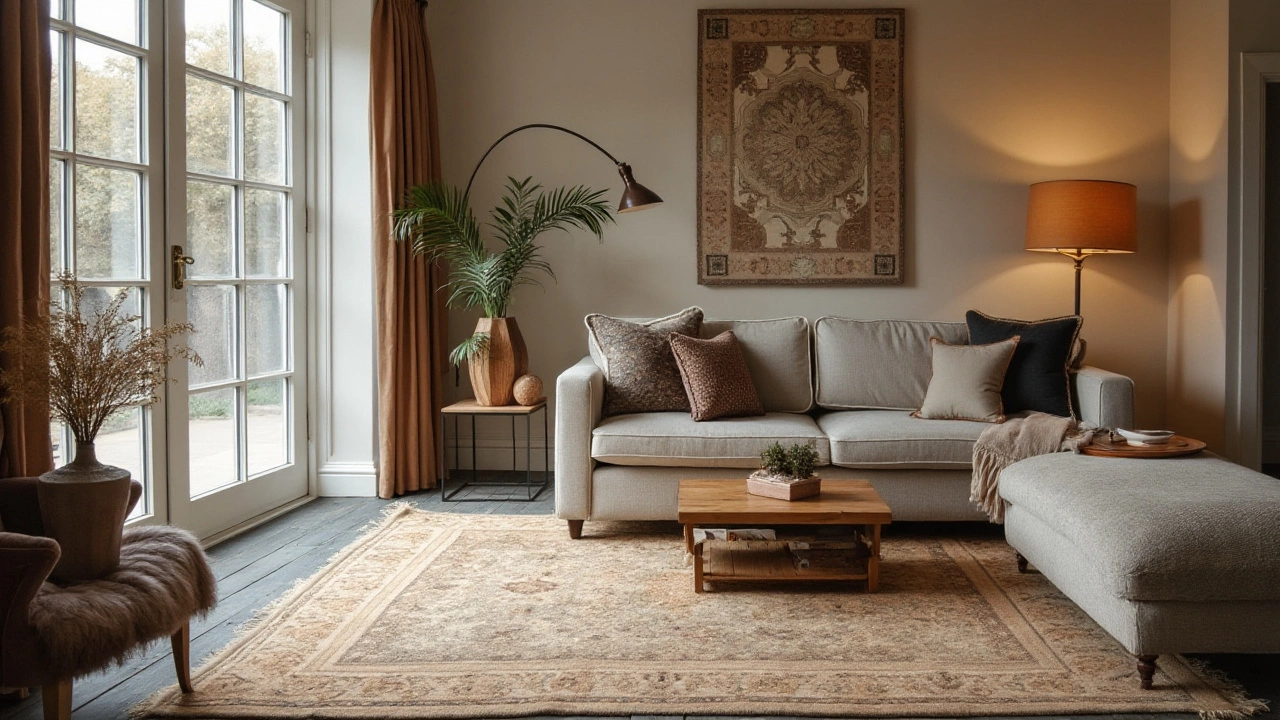Buying Rugs Made Simple – Choose Smart, Choose Green
Rugs can pull a room together, add comfort, and hide a few dents. But with so many options, it’s easy to feel stuck. The good news? You don’t need a design degree or a massive budget to pick a rug that fits your style and the planet.
What to Look for When Buying a Rug
First, think about the room’s traffic. High‑traffic spaces like kitchens or hallways need a rug that can take a beating. Look for a low pile or a tightly woven flatweave – they clean up fast and stay flat under foot traffic.
Next, measure the space. A common mistake is buying a rug that’s too small, leaving empty floor around it. A safe rule is to leave at least 18‑24 inches of floor visible on all sides in a living room. In a bedroom, a rug that sits under the bed’s lower third feels cozy without covering the whole floor.
Third, consider the style you love. Whether you like bold patterns, muted tones, or a natural texture, keep the color palette in sync with your existing furniture. If you’re unsure, a neutral base with a splash of colour in the pattern works for most rooms.
Finally, check the durability rating. Natural fibers like wool naturally resist stains and bounce back after a spill. Synthetic options such as polypropylene are cheap and stain‑resistant but may not feel as warm underfoot.
Eco‑Friendly Rug Options
If you want to keep your carbon footprint low, start with the material. Wool is renewable, biodegradable, and naturally flame‑resistant. Look for rugs labeled “organic wool” – that means the farms used no chemicals or harsh dyes.
Cotton rugs are another good choice. They’re easy to clean, can be machine‑washed, and grow quickly. Choose “GOTS certified” cotton for a guarantee that the farming and processing meet strict environmental standards.
Recycled rugs are gaining popularity. These are made from reclaimed plastics or old textiles turned into new fibers. They keep waste out of landfills and often come in eye‑catching patterns.
For a truly zero‑waste option, try a rug made from jute, sisal, or seagrass. These plant‑based fibers are harvested without killing the plant, and the rugs decompose naturally after their life span.
Where to buy? Check out local UK eco‑stores, online marketplaces that specialize in sustainable home goods, or even community fairs where artisans sell handmade rugs. Buying locally cuts transport emissions and lets you feel confident about the maker’s practices.
Maintenance matters for longevity. Vacuum regularly, spot‑clean spills quickly, and give a gentle shake‑out outdoors once a month. A well‑cared rug lasts years, meaning fewer replacements and less waste.
Bottom line: pick a rug that matches your room’s use, size it right, and choose a material that aligns with your eco‑values. With these simple steps you’ll have a floor piece that looks great, feels good, and does right by the planet.
-

How Much Does a Quality Rug Cost in 2025?
Navigating the world of rugs can be daunting with a wide range of prices. From handmade masterpieces to budget-friendly options, this article will guide you on estimating the cost of a quality rug in 2025. Discover what influences rug prices, including design, materials, and origins, and learn practical tips on how to shop smartly for rugs. Whether you're decorating a new home or refreshing a room, this guide is a resource to help you make informed decisions.
